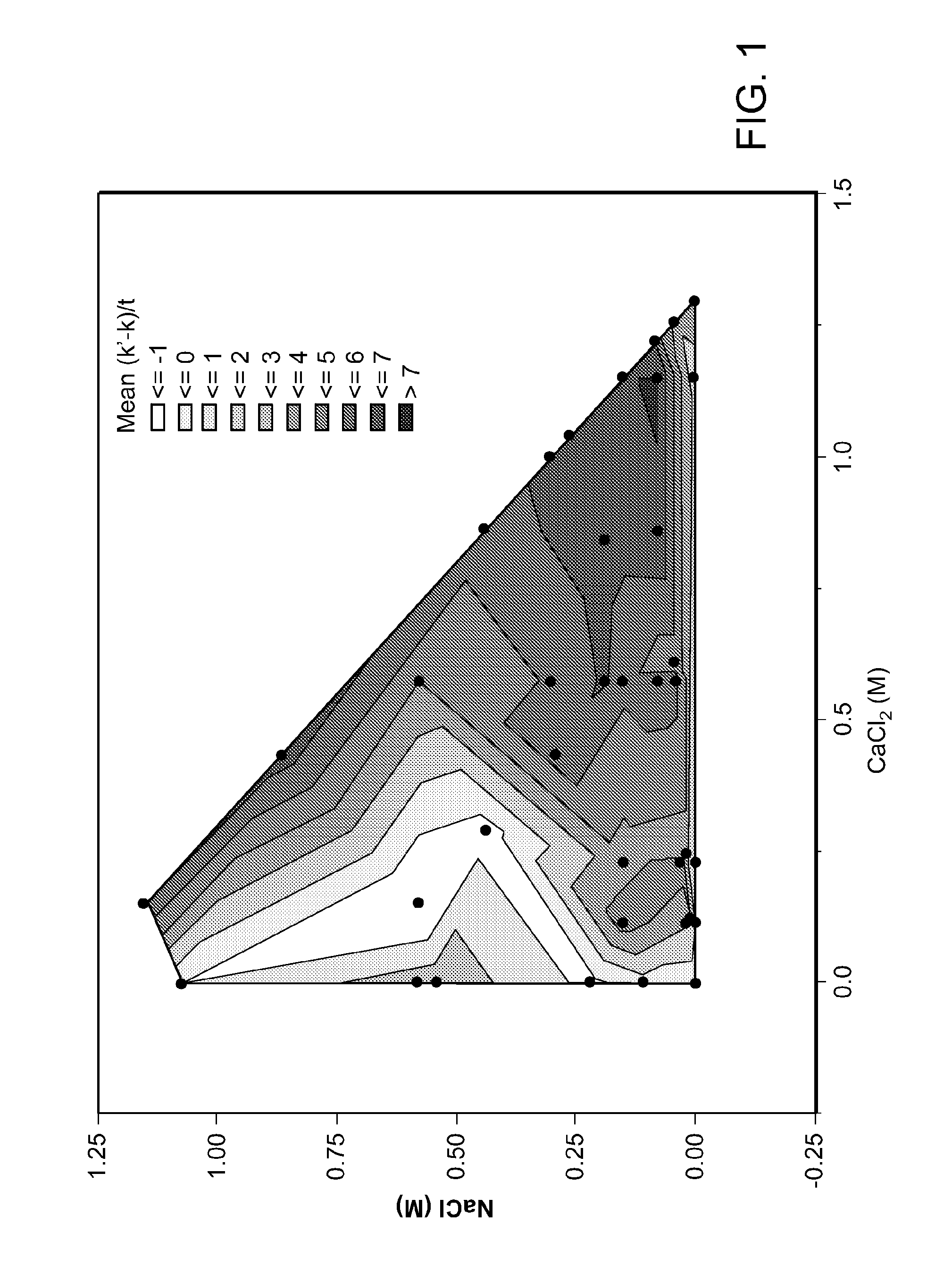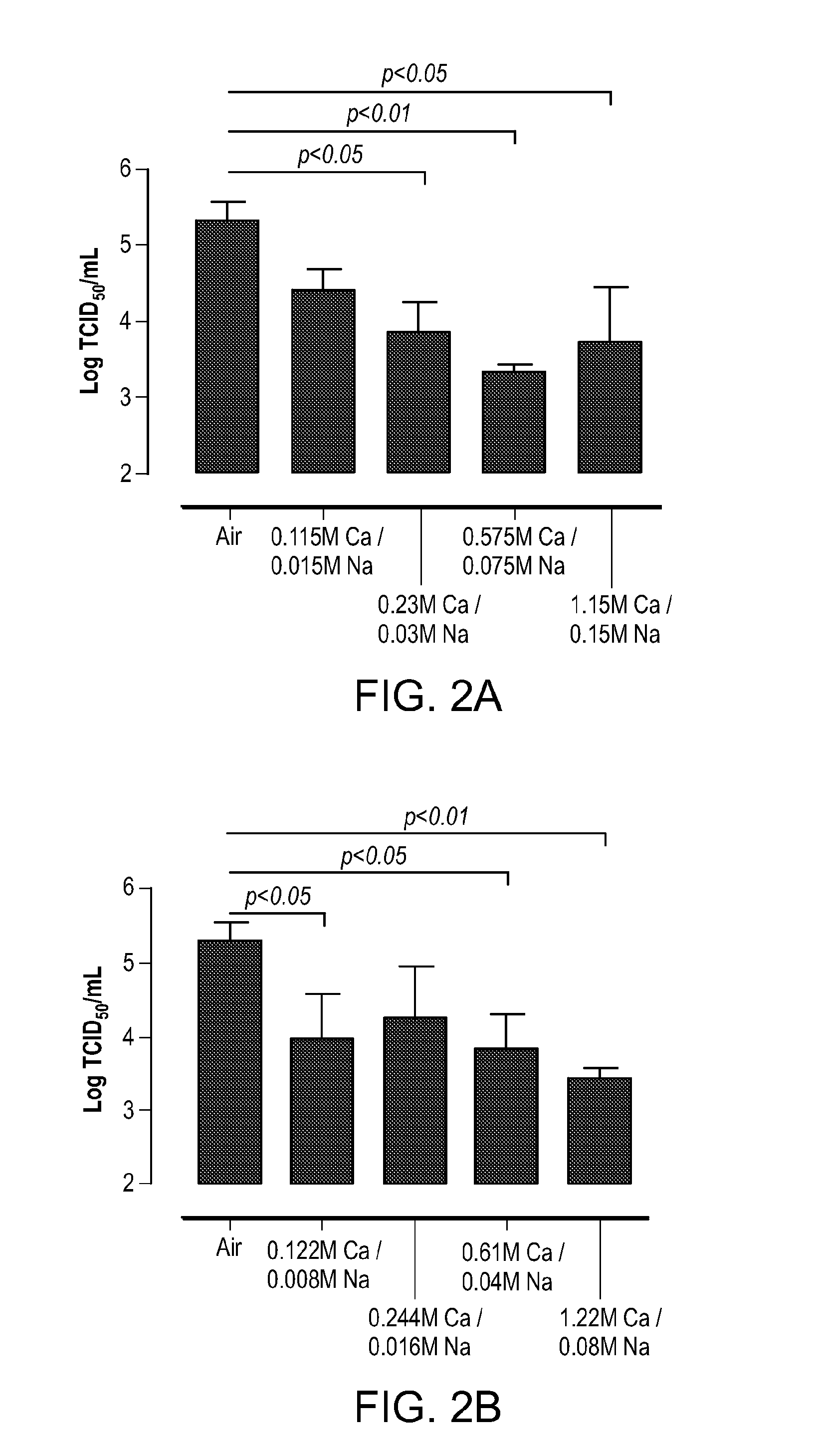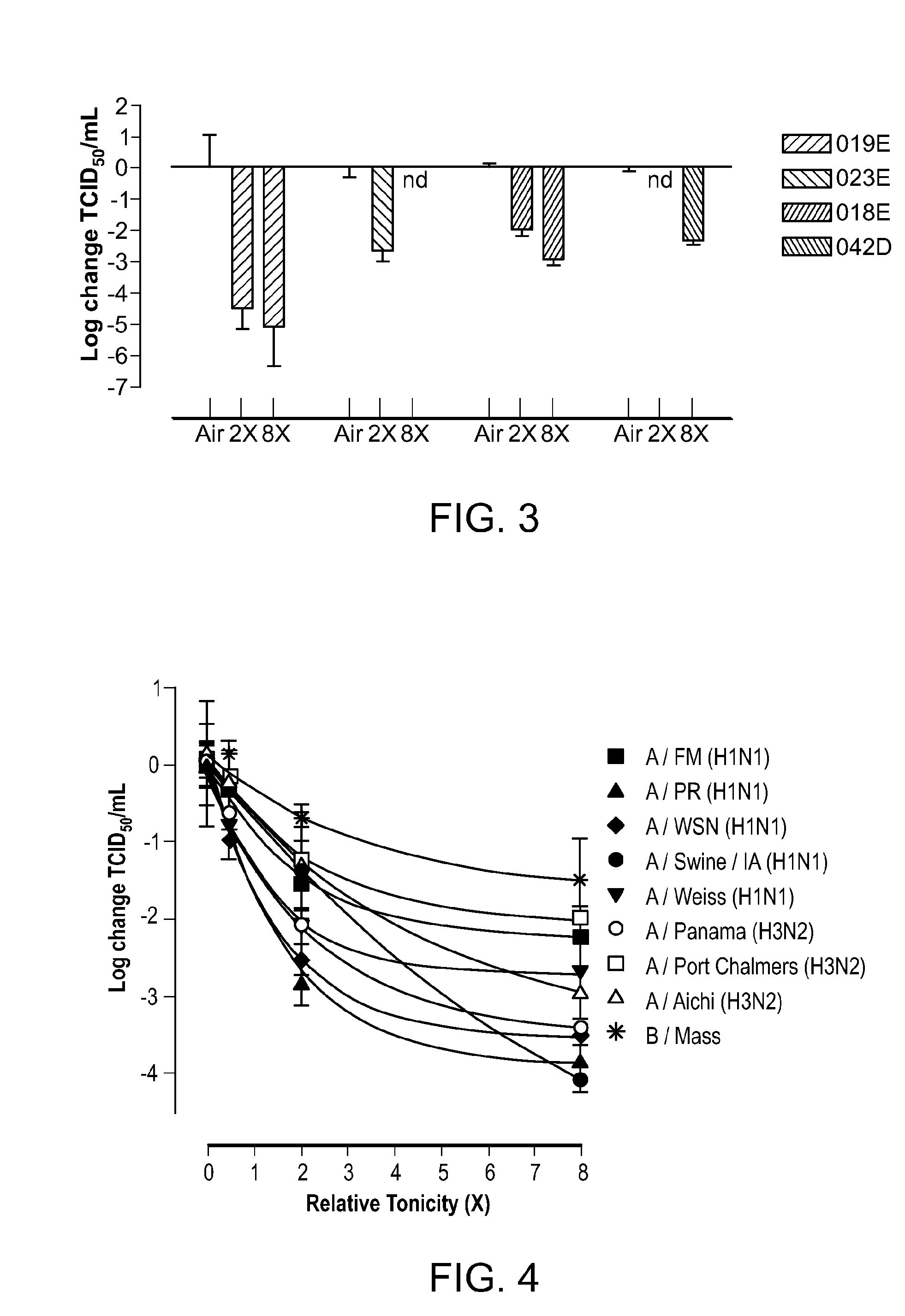Pharmaceutical formulations and methods for treating respiratory tract infections
a technology of respiratory tract infections and pharmaceutical formulations, applied in the direction of antibacterial agents, inorganic non-active ingredients, immune disorders, etc., can solve the problems of irritability, poor appetite, runny nose, etc., and achieve the effect of reducing viral replication, superior synergistic effect, and reducing viral replication
- Summary
- Abstract
- Description
- Claims
- Application Information
AI Technical Summary
Benefits of technology
Problems solved by technology
Method used
Image
Examples
example 1
[0160]In this example, formulations comprising calcium and sodium at different ratios were tested in order to determine whether certain concentrations and ratios provide superior therapeutic activities (e.g., reduction in viral titers). Formulations with Ca+2:Na+ ratios from about 4:1 to about 16:1 of (mole:mole) were identified as having superior therapeutic activities.
[0161]Methods:
[0162]A cell culture model of influenza infection was used to study the effects of different nebulized solutions on viral infection. Calu-3 cells were cultured on permeable membranes (12 mm Transwells; 0.4 μm pore size, Corning Lowell, Mass.) until confluent (membrane is fully covered with cells) and air-liquid interface (ALI) cultures were established by removing the apical media and culturing at 37° C. / 5% CO2. Cells were cultured for >2 weeks ALI before each experiment.
[0163]Prior to each experiment the apical surface of each Transwell was washed 3× with PBS. Cells were subsequ...
example 2
Calcium:Sodium Formulations Reduced the Infectivity of Multiple Influenza Strains In Vitro
[0172]In this example, the in vitro therapeutic activities of calcium:sodium formulations (with a Ca2+:Na+ ratio at 8:1 (mole:mole)) were tested using multiple strains of Influenza viruses. The formulations were varied in tonicity (either 0.5×, 2× or 8× the tonicity of an isotonic solution). The formulations were shown to effectively reduce the infectivity of a broad array of influenza viruses.
[0173]Methods:
[0174]Calu-3 cells were cultured on permeable membranes (12 mm Transwells; 0.4 μm pore size, Corning Lowell, Mass.) until confluent (membrane is fully covered with cells) and air-liquid interface (ALI) cultures were established by removing the apical media and culturing at 37° C. / 5% CO2. Cells were cultured for >2 weeks at ALI before each experiment. Normal human bronchial epithelial (NHBE) cells were seeded at passage 2 on permeable membranes (12 mm Millicell, 0.4 μm pore size; Millipore Bi...
example 3
In Vivo Therapeutic Activities of Calcium:Sodium Formulations in Reducing Infectivity of Influenza Virus in a Ferret Influenza Model
[0184]In this example, the in vivo therapeutic activities of two liquid formulations with a Ca2+:Na+ ratio at 8:1 (mole:mole) were tested using a ferret model of influenza. The formulations were hypertonic (either 4× or 8× the tonicity of an isotonic solution). The treatments were shown to improve the clinical course of influenza infection and dampen the inflammatory response to influenza infection in ferrets.
[0185]Methods:
[0186]The ferret model of influenza is a standard model for the evaluation of influenza vaccines or antivirals. Using this model we tested the therapeutic activities of FORMULATION A and two 8:1 molar ratio formulations that had enhanced activity against influenza replication in vitro. The formulations tested are shown in Table 3. Control ferrets were exposed to inhalation grade water for the same duration (6.5 minutes) and under the ...
PUM
| Property | Measurement | Unit |
|---|---|---|
| Fraction | aaaaa | aaaaa |
| Fraction | aaaaa | aaaaa |
| Molar density | aaaaa | aaaaa |
Abstract
Description
Claims
Application Information
 Login to View More
Login to View More - R&D
- Intellectual Property
- Life Sciences
- Materials
- Tech Scout
- Unparalleled Data Quality
- Higher Quality Content
- 60% Fewer Hallucinations
Browse by: Latest US Patents, China's latest patents, Technical Efficacy Thesaurus, Application Domain, Technology Topic, Popular Technical Reports.
© 2025 PatSnap. All rights reserved.Legal|Privacy policy|Modern Slavery Act Transparency Statement|Sitemap|About US| Contact US: help@patsnap.com



